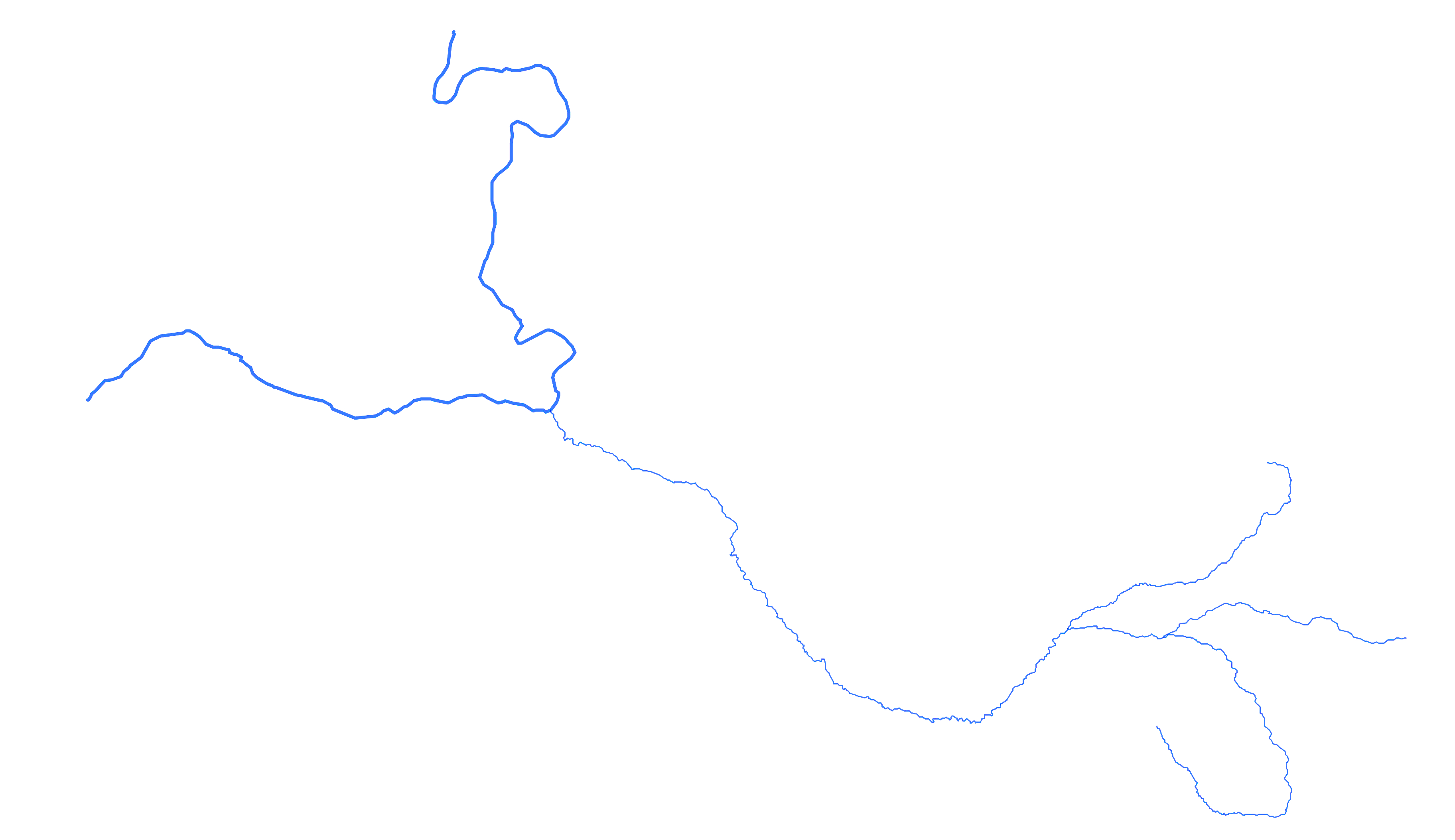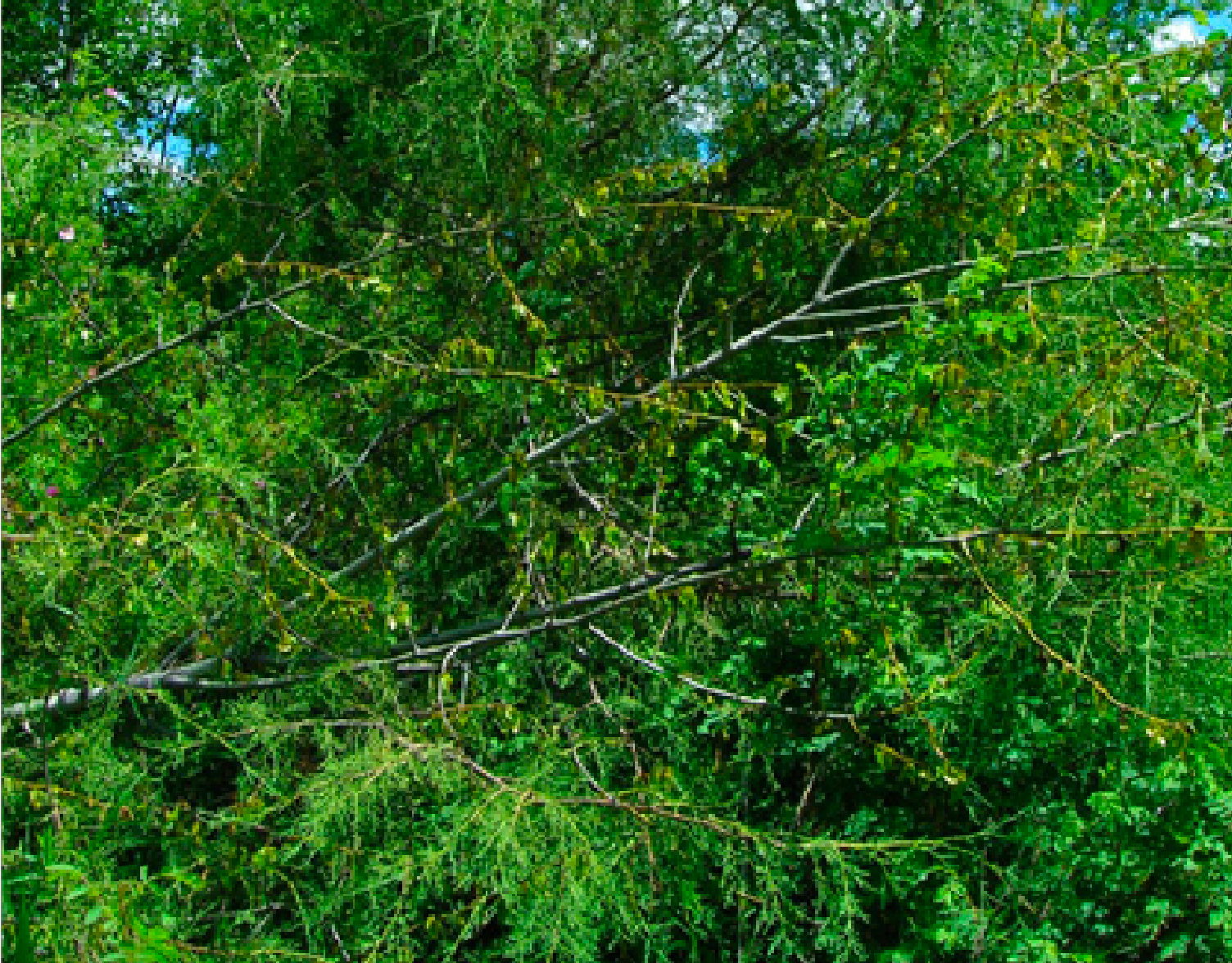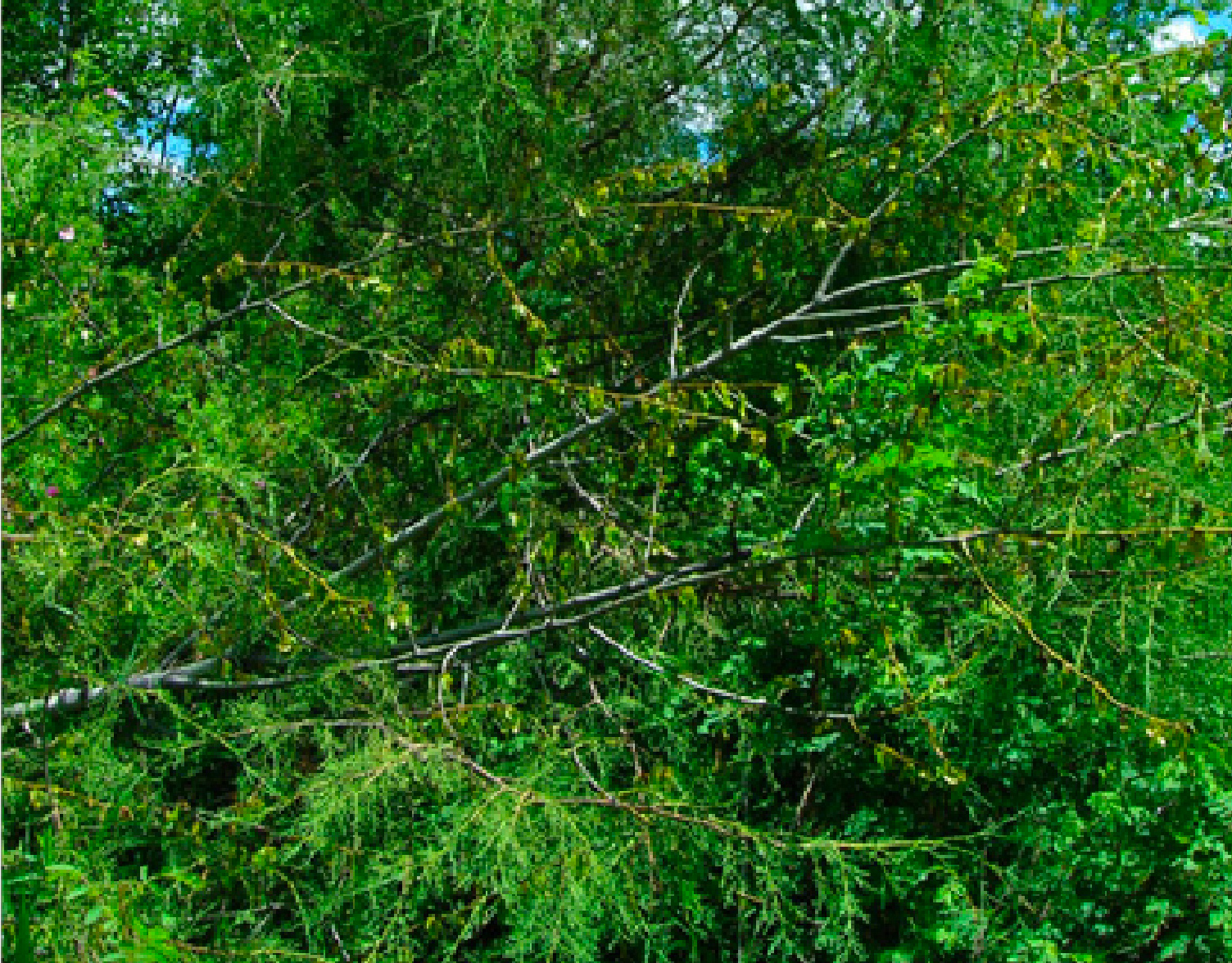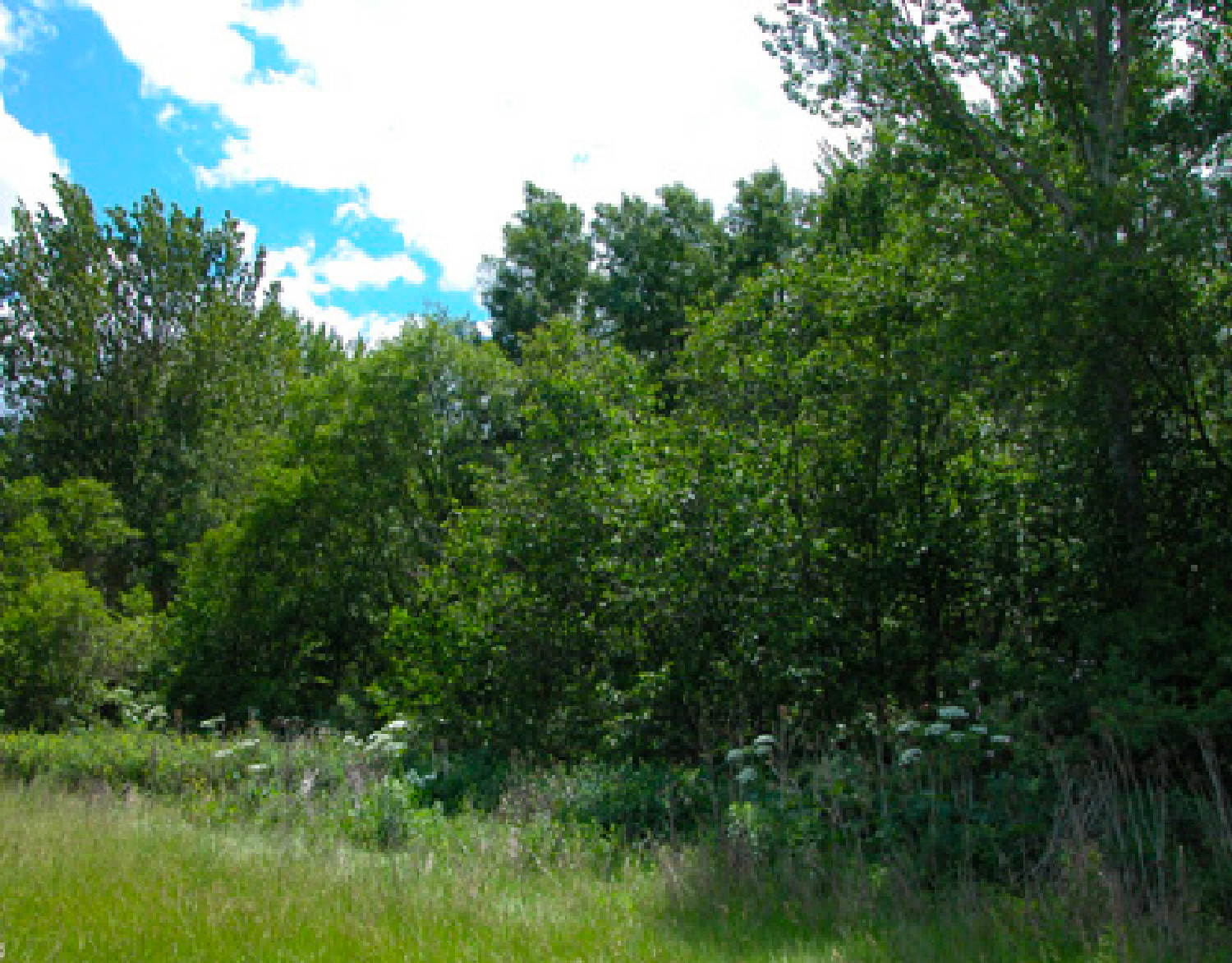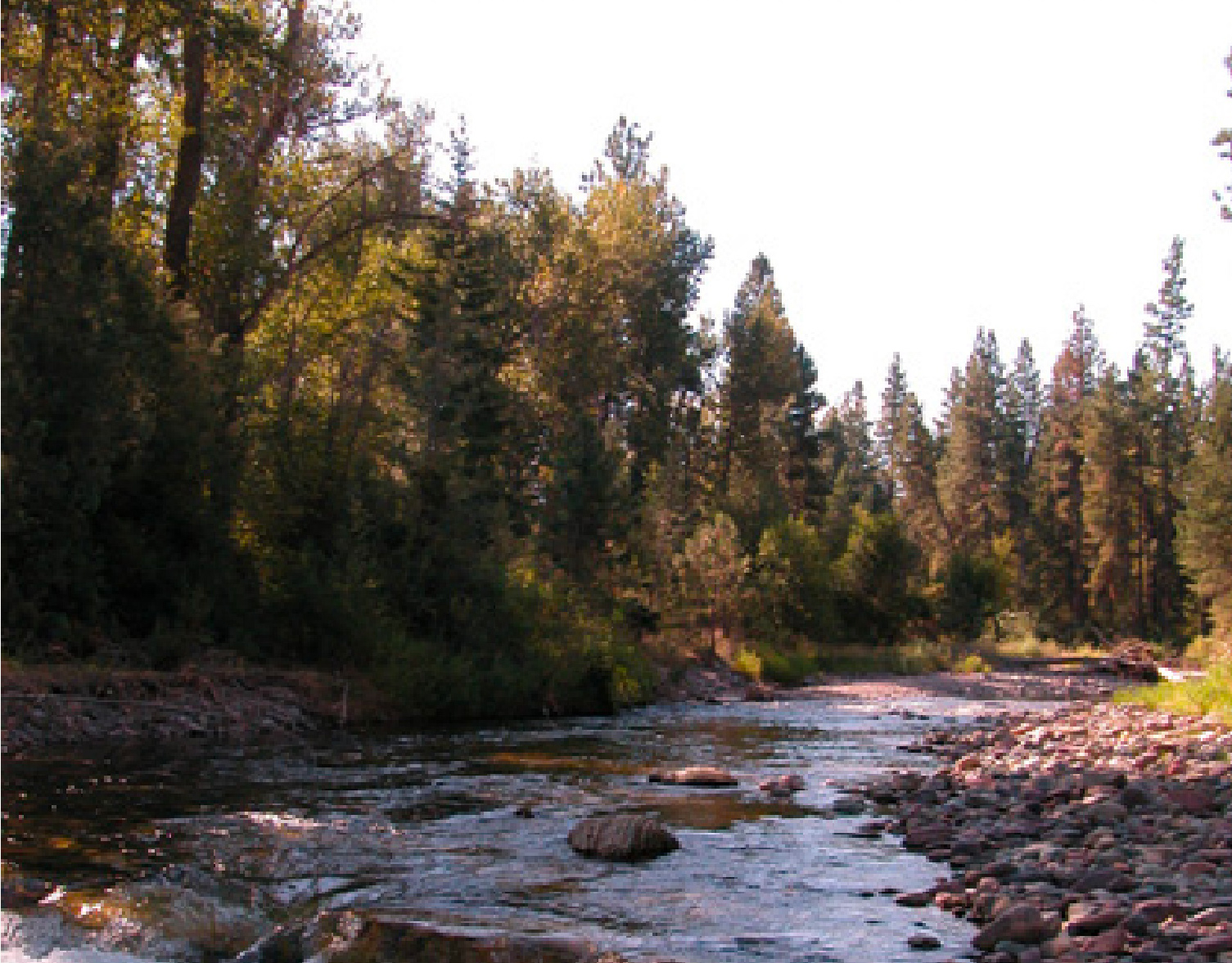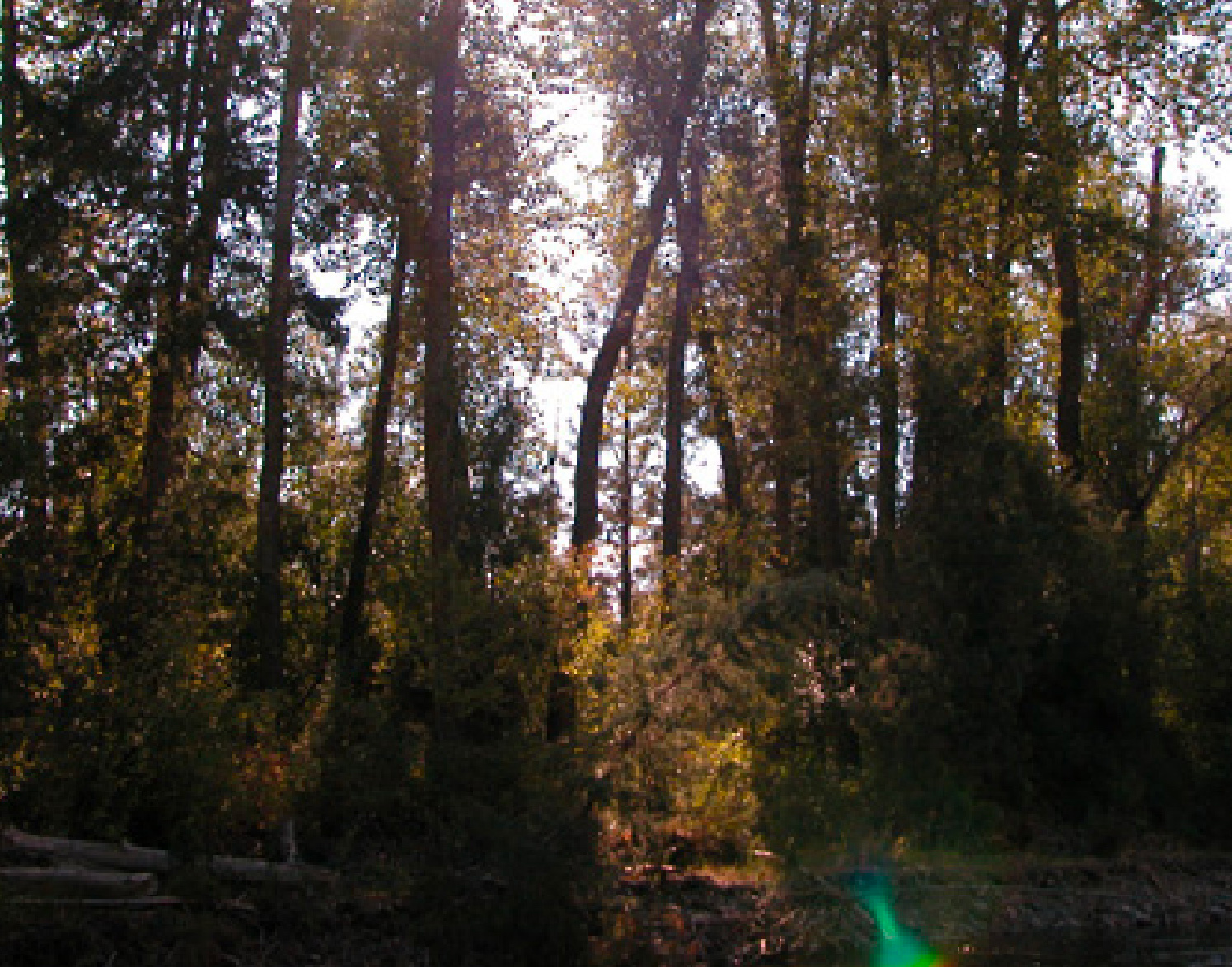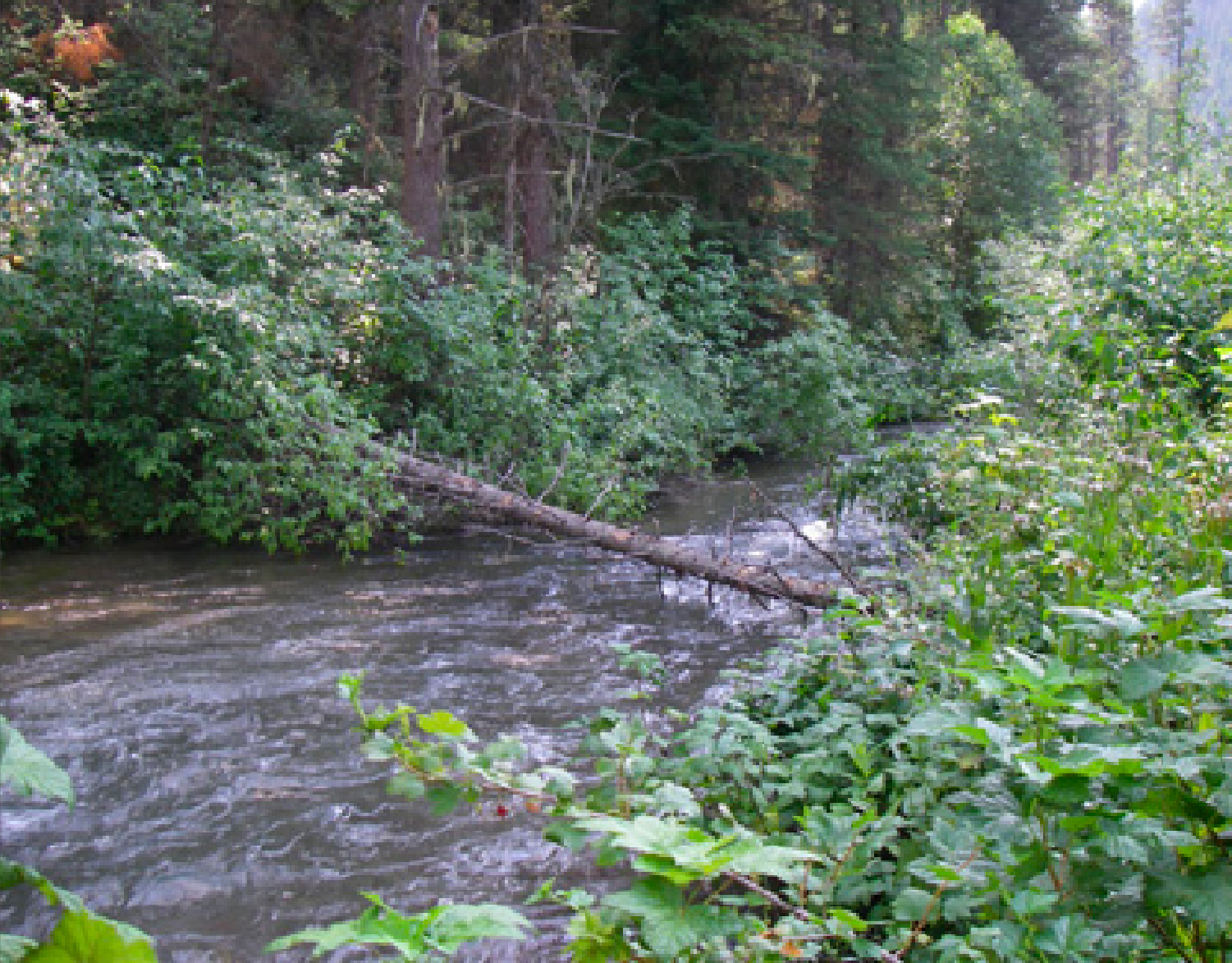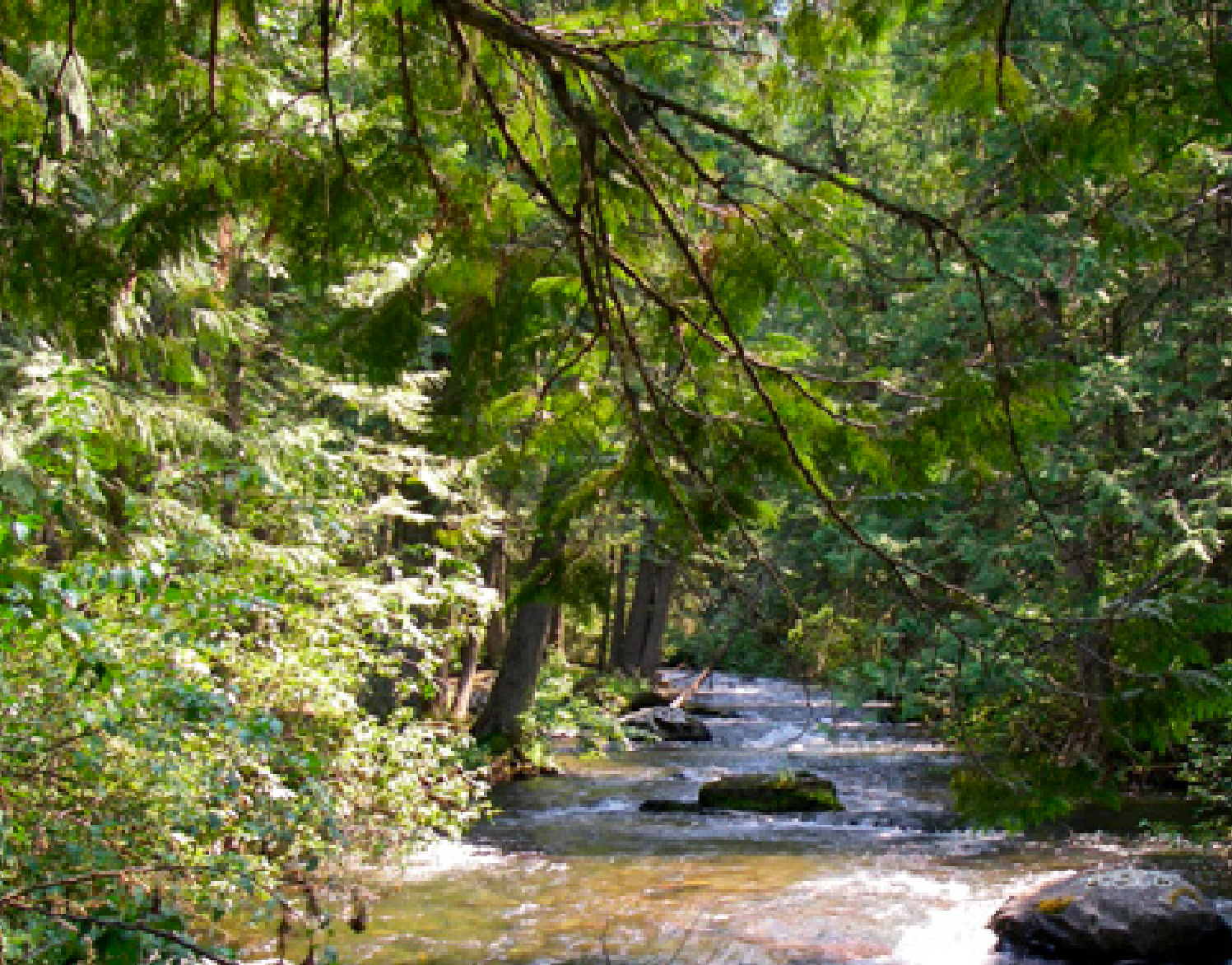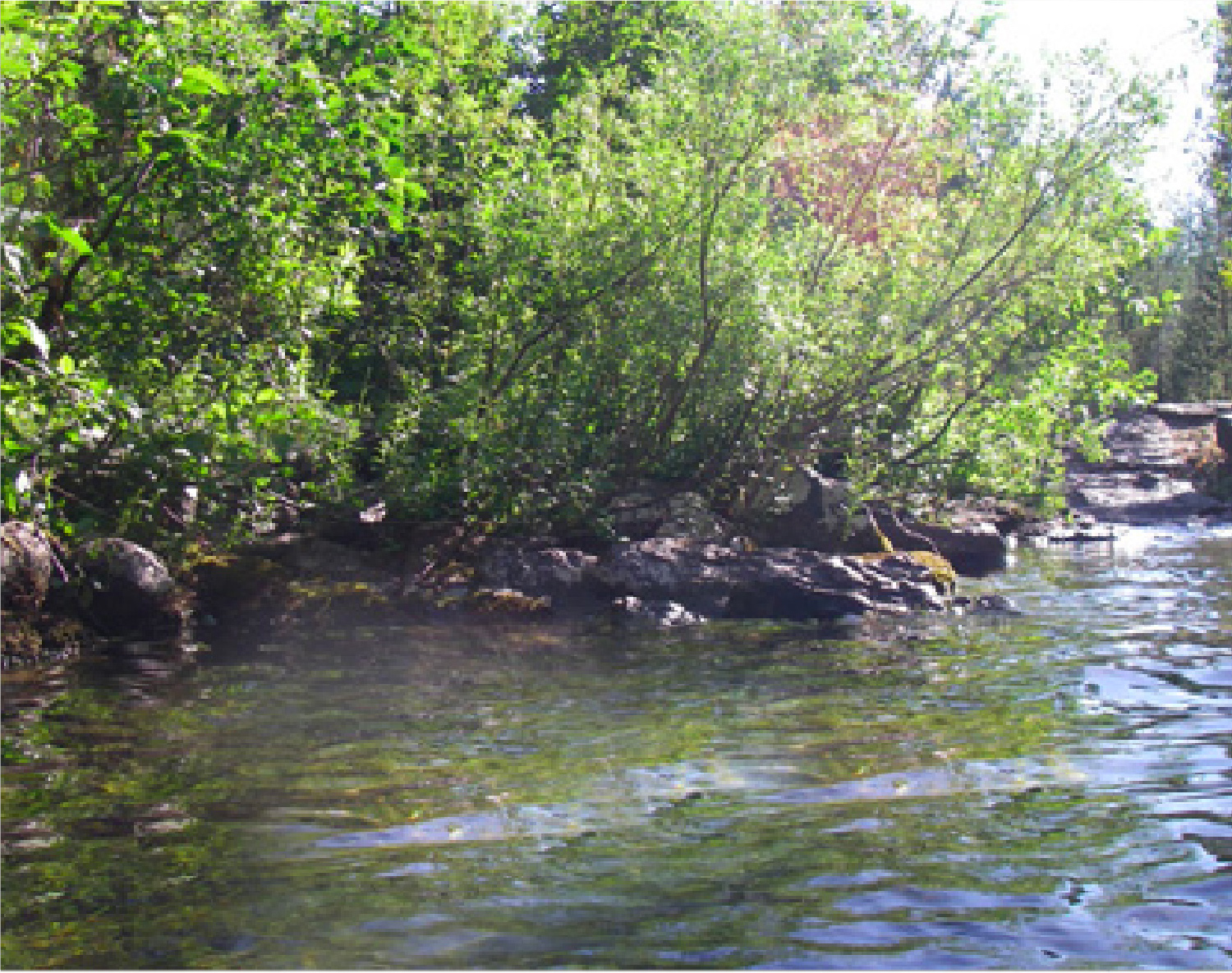Riparian Habitat: Healthy Riparian Habitat is Often Dense
Riparian Habitat: Healthy Riparian Habitat is Often Dense
Healthy riparian zones have large areas of very dense vegetation interspersed with more open areas. Before 1850, long stretches of the riparian vegetation bordering the Jocko River was almost impenetrable to humans—a jungle-like bottomland thick with trees, understory shrubs, vines, and herbs. The fish and wildlife native to the Jocko evolved with these dense riparian areas. Click on the Jocko River locations below (green circles) to see photos of what healthy, dense riparian vegetation looks like, from near the mouth of the stream to the headwaters.
Click a Number to See a Photo Showing the Density of the Riparian Zone at that Spot
Riparian Habitat: Healthy Riparian Habitat is Often Dense
Healthy riparian zones have large areas of very dense vegetation interspersed with more open areas. Before 1850, long stretches of the riparian vegetation bordering the Jocko River was almost impenetrable to humans—a jungle-like bottomland thick with trees, understory shrubs, vines, and herbs. The fish and wildlife native to the Jocko evolved with these dense riparian areas. Click on the Jocko River locations below (green circles) to see photos of what healthy, dense riparian vegetation looks like, from near the mouth of the stream to the headwaters.
Click a Number to See a Photo Showing the Density of the Riparian Zone at that Spot
What are the Benefits of Dense Riparian Vegetation
Dense vegetation along a creek is critical to maintaining healthy fish habitat.
- Dense riparian vegetation shades the water and keeps it cool.
- The plants and their roots filter sediment and protect against erosion.
- The leaves and insects that drop into the stream contribute enormously to the aquatic food chain.
- Dense vegetation that overhangs a stream gives fish cover from predators.
- Trees dropping into the stream also provide critical cover and add large woody debris to the stream.
- Fish love to hide under logs and submerged brush.
Once they enter the vicinity of spawning areas, large adult migrant fish like bull trout can be highly visible and vulnerable to terrestrial (including human) and avian predators. The availability of dense riparian forest canopy and associated large woody debris accumulations in the proximity of spawning habitats can be critical for survival and successful reproduction of migratory salmonids, particularly those that venture far upstream and that are required to spend long periods holding in small river and stream environments. Cover elements can be particularly important in providing physical shelter from high-flow events, or refuge during particularly low flows in spawning areas.*
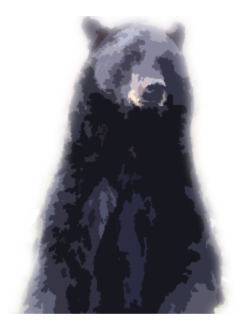
The productivity of riparian plant communities is also exceptionally high. So dense riparian areas provide abundant foods, including seeds, herbaceous vegetation, and insects. And the structural complexity of dense riparian plant communities provides lots of layers for foraging.
Riparian areas also provide safe habitat for many for breeding and rearing young.
*Adapted from Return to the River. Northwest Power and Conservation Council document 2000-12
What are the Benefits of Dense Riparian Vegetation
Dense vegetation along a creek is critical to maintaining healthy fish habitat.
- Dense riparian vegetation shades the water and keeps it cool.
- The plants and their roots filter sediment and protect against erosion.
- The leaves and insects that drop into the stream contribute enormously to the aquatic food chain.
- Dense vegetation that overhangs a stream gives fish cover from predators.
- Trees dropping into the stream also provide critical cover and add large woody debris to the stream.
- Fish love to hide under logs and submerged brush.
Once they enter the vicinity of spawning areas, large adult migrant fish like bull trout can be highly visible and vulnerable to terrestrial (including human) and avian predators. The availability of dense riparian forest canopy and associated large woody debris accumulations in the proximity of spawning habitats can be critical for survival and successful reproduction of migratory salmonids, particularly those that venture far upstream and that are required to spend long periods holding in small river and stream environments. Cover elements can be particularly important in providing physical shelter from high-flow events, or refuge during particularly low flows in spawning areas.*
The dense vegetation that characterizes healthy riparian areas provides many wildlife species with escape, hiding, and resting cover. Thick vegetation along a stream provides a natural travel corridor for many species. For example, grizzly bears, moose, elk, and deer utilize riparian areas to travel between high-elevation summer and low-elevation winter ranges. Plant communities in dense riparian habitats are more diverse in their composition and structure than other areas, which means more habitats. More habitats means more wildlife.
The productivity of riparian plant communities is also exceptionally high. So dense riparian areas provide abundant foods, including seeds, herbaceous vegetation, and insects. And the structural complexity of dense riparian plant communities provides lots of layers for foraging.
Riparian areas also provide safe habitat for many for breeding and rearing young.
*Adapted from Return to the River. Northwest Power and Conservation Council document 2000-12

